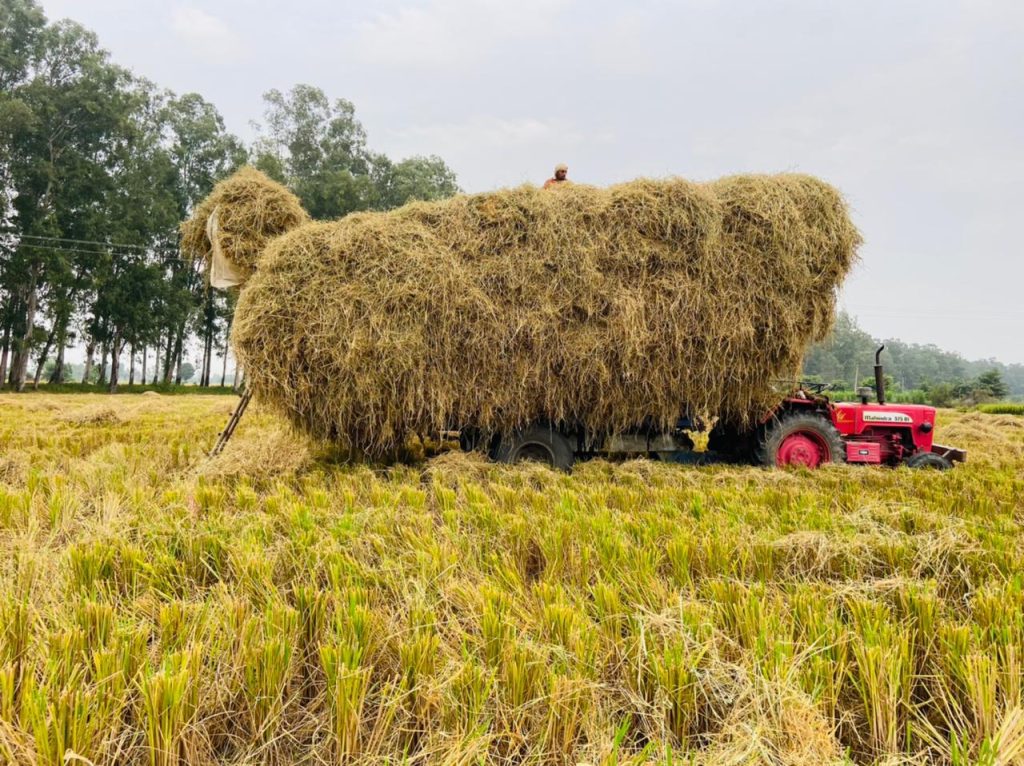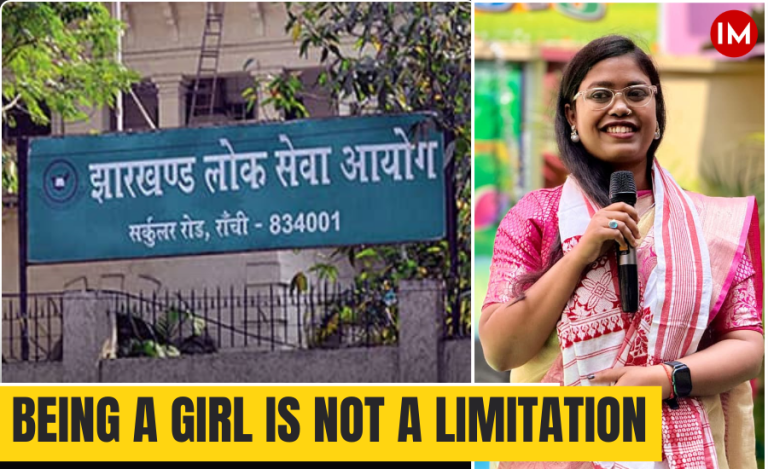This time of the year, Punjab is usually in news for stubble-burning cases. This stubble burning by farmers increases air pollution in the state and its effect can be felt even in the national capital Delhi which goes under a thick cloud of smog as a result.
In the past two weeks especially, the cases of stubble burning in Punjab have significantly increased, inviting concern from all quarters. Chief Secretary of Punjab Vijay Kumar Janjua and others have asked senior officials to conduct regular checks on people who are involved in these incidents. Most of the cases are coming from districts like Taran Tarn, Amritsar, Gurdaspur and Patiala.
However, amid all this smoke, one encouraging sign is, if we compare this year’s figures with the previous years’, a steep fall has been recorded in fire incidents.
This year, many steps have been taken to make people and farmers aware of the destruction caused to nature by stubble burning, and, hence, the result is palpable in less fires.
We got in touch with Gurdaspur Deputy Commissioner Mohammad Ishfaq, who’s been in news for taking various steps to curb farm fire cases in his district, to bring you this report.
SPREADING MAXIMUM AWARENESS
As per the records of the Punjab government, around 2721 stubble-burning cases have been recorded so far in the entire state, which, in comparison to previous years’ cases, is very low. In the previous three years, Punjab recorded 55,210 in 2019, 76,590 in 2020, and 71,304 in 2021.
The farm fire season usually begins around mid-September and goes on for two months till November. As stubble burning is mainly done to clear the fields in a shorter time for the next wheat crop, it is a very easy, yet the most dangerous, solution. To counter this and give a substitute for stubble burning to farmers, the Nature Conservancy (TNC) recently launched a campaign to improve soil health and tackle stubble burning in 12 districts.
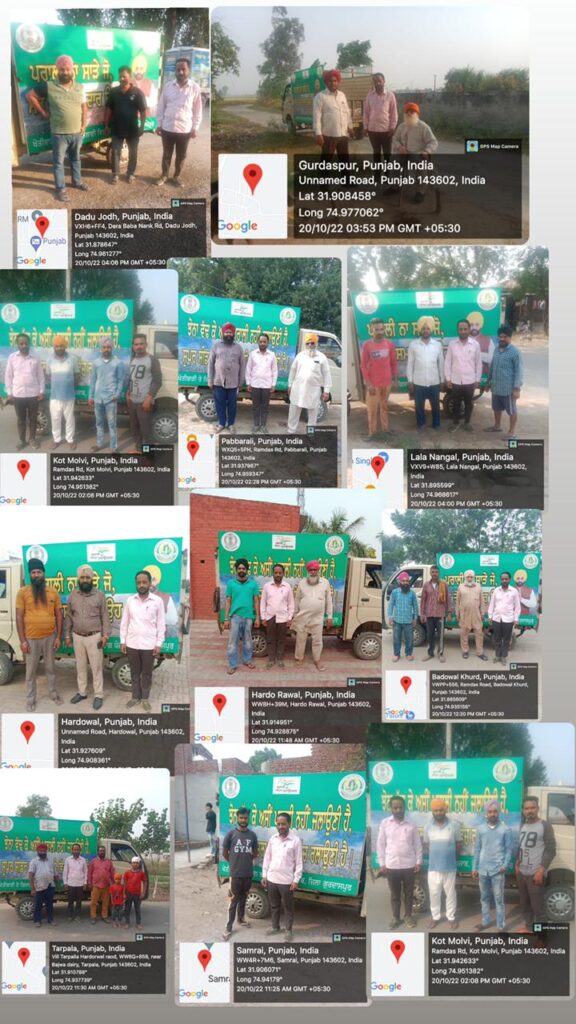
The project – Promoting Regenerative and No Burn Agriculture (PRANA) – has been rolled out via 44 mobile vans in the targeted districts. The Deputy Commissioners of Mansa, Bathinda, Muktsar, Ferozepur, Barnala, Tarn Taran, Gurdaspur, Patiala and Moga flagged off the ‘PRANA vans’ in their respective jurisdictions.
While speaking with Indian Masterminds, Deputy Commissioner of Gurdaspur, Mohammad Ishfaq said, “For the last three months, the district administration along with other progressive farmers is spreading awareness in the villages of Gurdaspur. Secondly, camps are being set up in all the villages so that the administration can identify the people who are involved in farm burning and can spread awareness to curb it.”
He also said that here are cluster coordinators, sarpanches, village committees, rural development staff, and members who are conducting meetings on a regular basis. Moreover, announcements from village Gurdwaras are being done daily along with meetings with kisan leaders in all districts, blocks, and village levels.
TAKING IT TO THE SCHOOLS
Not stopping at this, the administration is also reaching out to the schools of the district to inform and lead children on the right path. Chief Agriculture Officer (CAO) of Gurdaspur, Mr. Kamalpreet said, “We are organising painting and slogan writing competitions in schools to make the upcoming generation aware about the hazards of farm fires. Awards are also being given to students so as to get maximum engagement.”
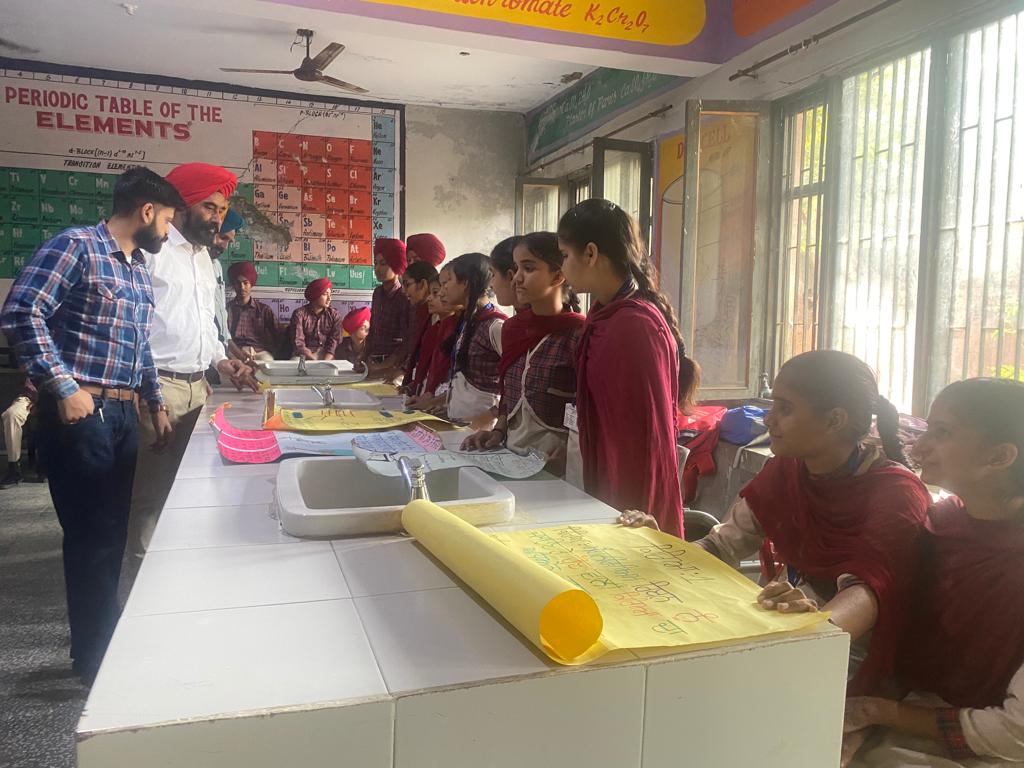
Apart from this, beautification drives are being taken up all over the district, where slogans in Punjabi language on avoiding stubble burning are being created on wall paintings in popular spots of the district like Batala, Kotla Sahiya, Gillan Wali, etc.
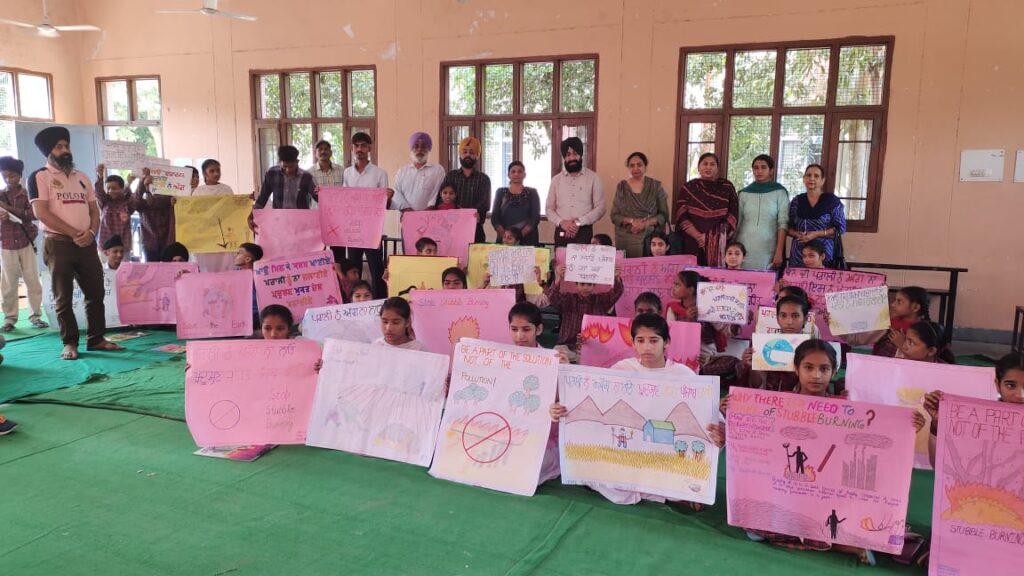
REDUCING BURNT AREAS
Collector Ishfaq furher informed that they have started another step to curb farm fires. This includes stopping the fire there and then as soon as they are informed about the incident. “Due to this, the procurement of paddy is around 37 percent more than the previous year. However, the number of cases is still somewhere close. But, due to this effort, the burnt area, which was earlier at 13 percent, has now been reduced to 2 percent.”
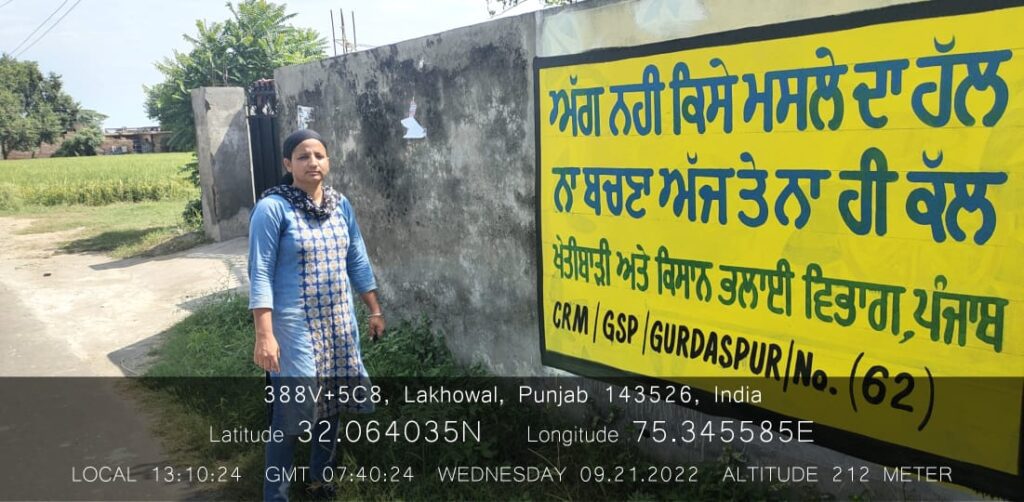
The next two weeks will be very crucial for all the districts in Punjab as the season of farm fires continues till the month of November. During this time, the administration of all districts will spare no efforts to reduce crop burning as much as possible, just like Gurdaspur is doing.

